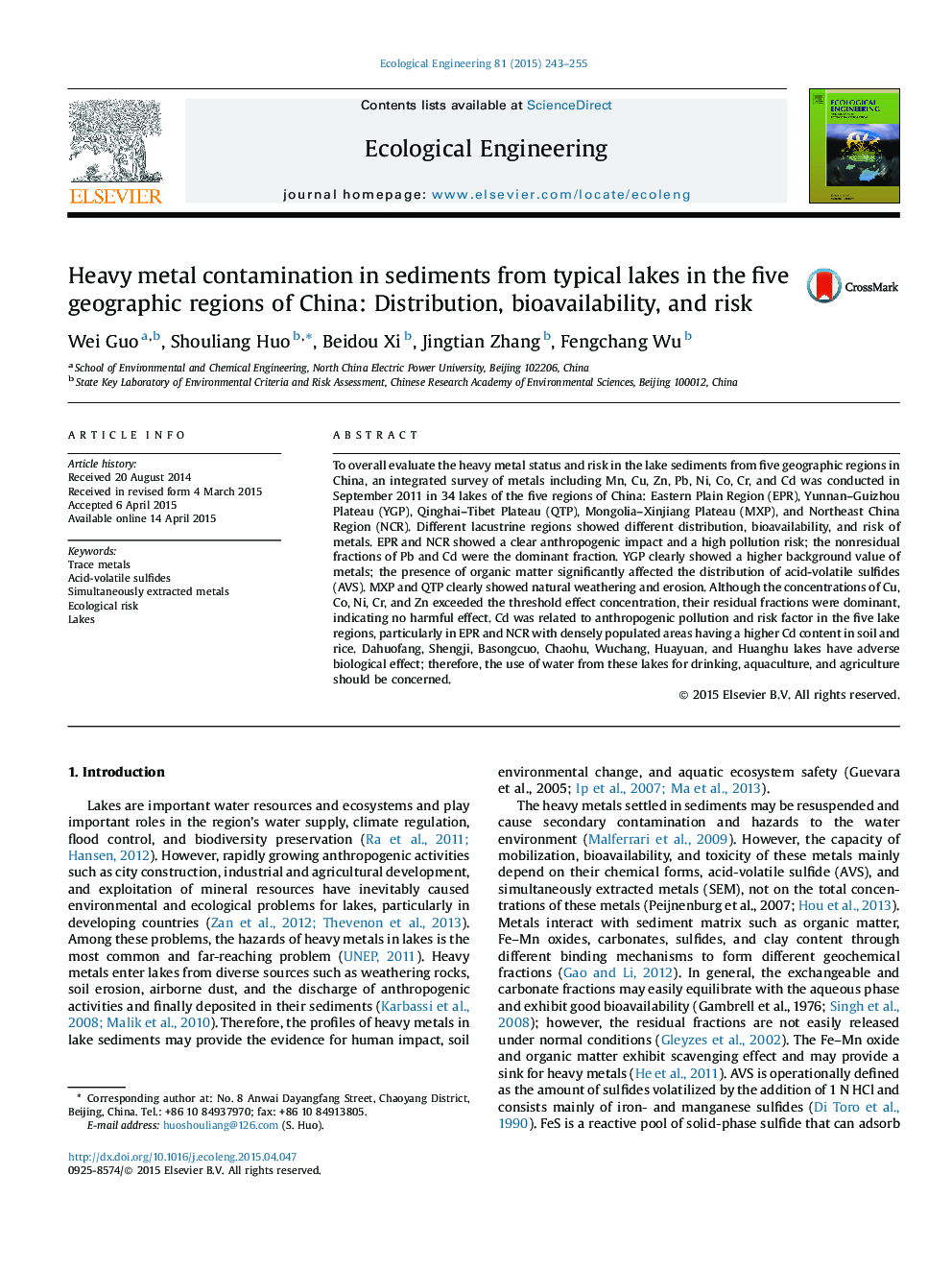| Article ID | Journal | Published Year | Pages | File Type |
|---|---|---|---|---|
| 4389079 | Ecological Engineering | 2015 | 13 Pages |
Abstract
To overall evaluate the heavy metal status and risk in the lake sediments from five geographic regions in China, an integrated survey of metals including Mn, Cu, Zn, Pb, Ni, Co, Cr, and Cd was conducted in September 2011 in 34 lakes of the five regions of China: Eastern Plain Region (EPR), Yunnan-Guizhou Plateau (YGP), Qinghai-Tibet Plateau (QTP), Mongolia-Xinjiang Plateau (MXP), and Northeast China Region (NCR). Different lacustrine regions showed different distribution, bioavailability, and risk of metals. EPR and NCR showed a clear anthropogenic impact and a high pollution risk; the nonresidual fractions of Pb and Cd were the dominant fraction. YGP clearly showed a higher background value of metals; the presence of organic matter significantly affected the distribution of acid-volatile sulfides (AVS). MXP and QTP clearly showed natural weathering and erosion. Although the concentrations of Cu, Co, Ni, Cr, and Zn exceeded the threshold effect concentration, their residual fractions were dominant, indicating no harmful effect. Cd was related to anthropogenic pollution and risk factor in the five lake regions, particularly in EPR and NCR with densely populated areas having a higher Cd content in soil and rice. Dahuofang, Shengji, Basongcuo, Chaohu, Wuchang, Huayuan, and Huanghu lakes have adverse biological effect; therefore, the use of water from these lakes for drinking, aquaculture, and agriculture should be concerned.
Related Topics
Life Sciences
Agricultural and Biological Sciences
Ecology, Evolution, Behavior and Systematics
Authors
Wei Guo, Shouliang Huo, Beidou Xi, Jingtian Zhang, Fengchang Wu,
